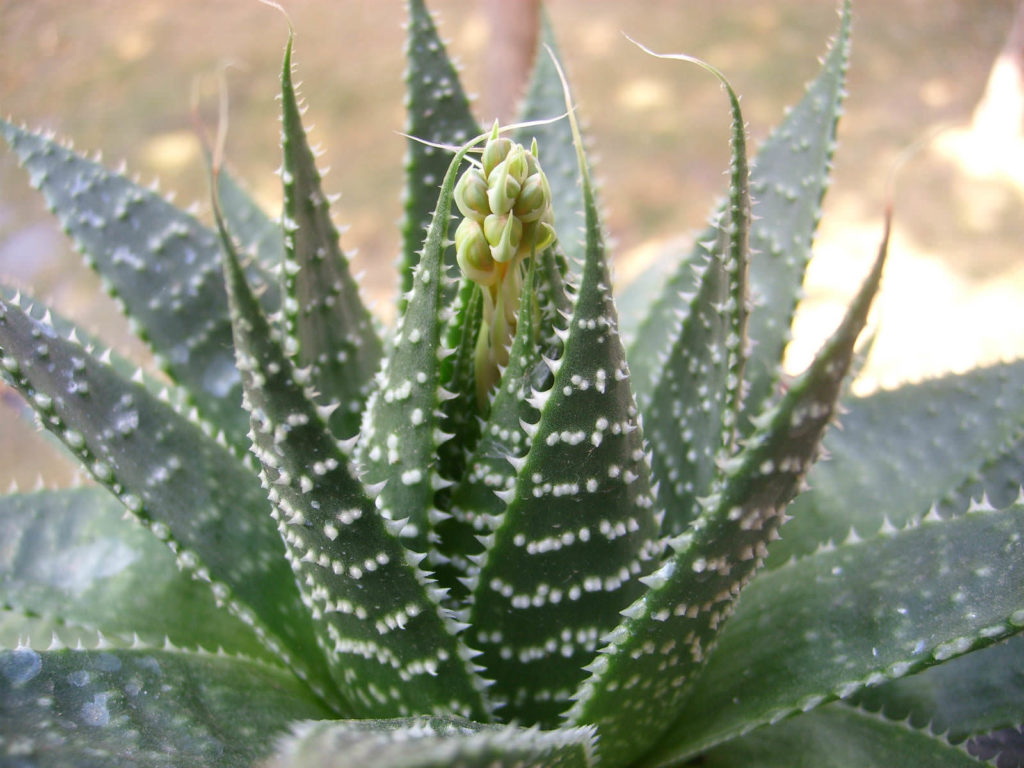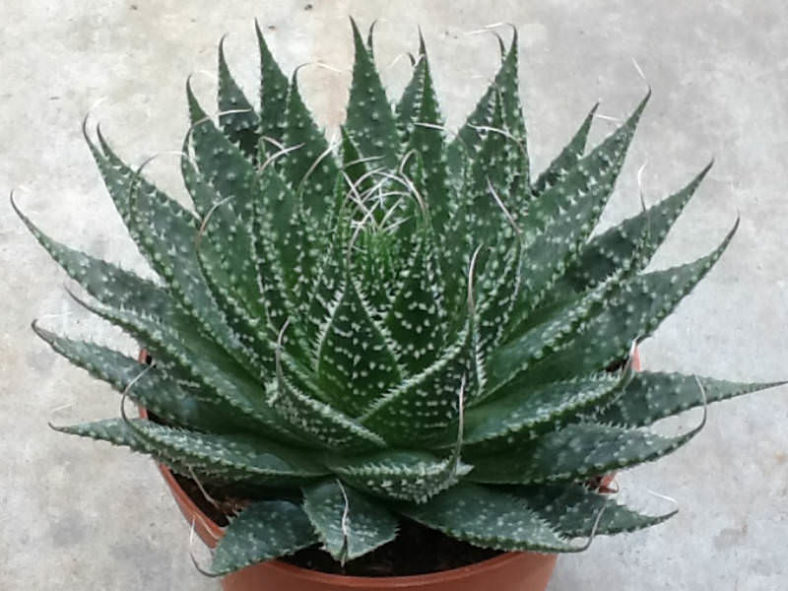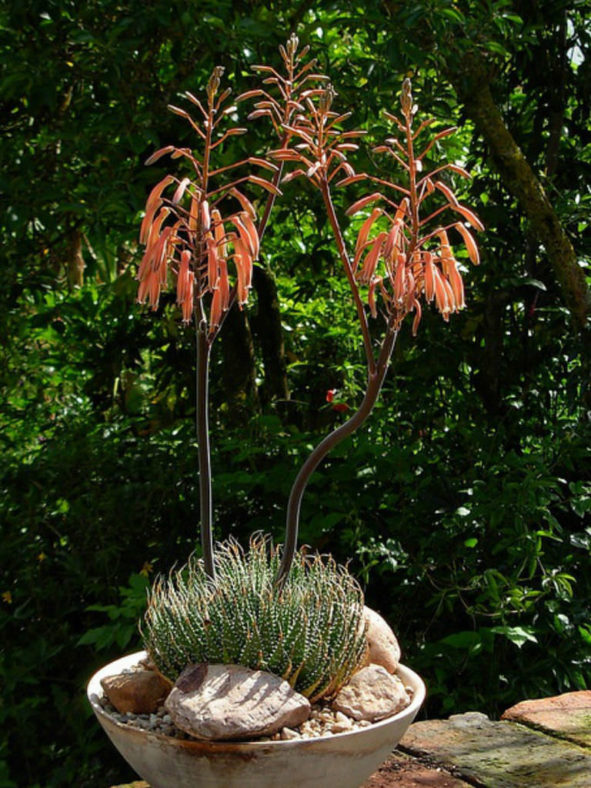Scientific Name
Aristaloe aristata (Haw.) Boatwr. & J.C.Manning
Common Name(s)
Guinea-fowl Aloe, Lace Aloe, Torch Plant
Synonym(s)
Aloe aristata, Aloe ellenbergeri, Aloe longiaristata, Tulista aristata
Scientific Classification
Family: Asphodelaceae
Subfamily: Asphodeloideae
Genus: Aristaloe
Etymology
The specific epithet "aristata (a-ris-TAH-tuh)" means "having awn" and refers to the lacy edges of the leaves.
Origin
Aristaloe aristata is native to Lesotho and South Africa.
Description
Aristaloe aristata, formerly known as Aloe aristata, is an attractive semi-hardy succulent that forms dense rosettes of thick, fleshy, triangular leaves. The rosettes can grow up to 8 inches (20 cm) in height and diameter. The leaves are dark green with tiny white bumps, bristly margins, and tipped with a soft white spine.
From late spring to early summer, the rosettes produce orange-red, tubular flowers that can reach up to 1.6 inches (4 cm) in length. They appear in panicles that can grow up to 20 inches (50 cm) tall.
This succulent is the type and sole species of Aristaloe, previously included in the genus Aloe.

How to Grow and Care for Aristaloe aristata
Light: When growing A. aristata indoors, place your plant near a window with plenty of bright indirect sunlight. Rotate the pot once or twice a week so that all sides of the plant receive equal lighting. Outdoors provide light shade, especially during the hottest parts of the day.
Soil: Plant A. aristata in a well-drained soil mix formulated for succulents or make your own. Drainage is essential because too much moisture around roots can cause root rot.
Hardiness: When temperatures shift below 50 °F (10 °C), it is time to bring your plant back inside. A. aristata can withstand temperatures as low as 10 to 40 °F (-12.2 to 4.4 °C), USDA hardiness zones 8a to 10b.
Watering: This succulent needs regular watering but is very tolerant of short periods of drought. Water deeply, but only when the soil is dry. Cut back on watering during the winter months. Do not let water stand in the rosettes.
Fertilizing: A. aristata generally does not require fertilizer but may benefit from the extra nutrients. Feed with a fertilizer for succulents in spring and summer only. Be sure to follow the label directions.
Repotting: This plant is not particularly fast-growing and will only rarely need repotting. To prevent rootbound, repot it in the spring in a container a few inches larger in diameter every few years.
Propagation: Propagating A. aristata can be done using offsets, cuttings, or seeds from a mature plant. Remove offsets from the mother plant or take cuttings with a sharp knife in late spring or early summer. For best results, sow seeds during the warm months.
Learn more at How to Grow and Care for Aloe.
Toxicity of Aristaloe aristata
A. aristata is not listed as toxic for people and pets.
Uses of Aristaloe aristata
The Pondo people use the juice of A. aristata mixed with water to wash their bodies for its tonic and refreshing effect.
Hybrids of Aristaloe aristata
Links
- Back to genus Aristaloe
- Succupedia: Browse succulents by Scientific Name, Common Name, Genus, Family, USDA Hardiness Zone, Origin, or cacti by Genus
Photo Gallery
Click on a photo to see a larger version.



